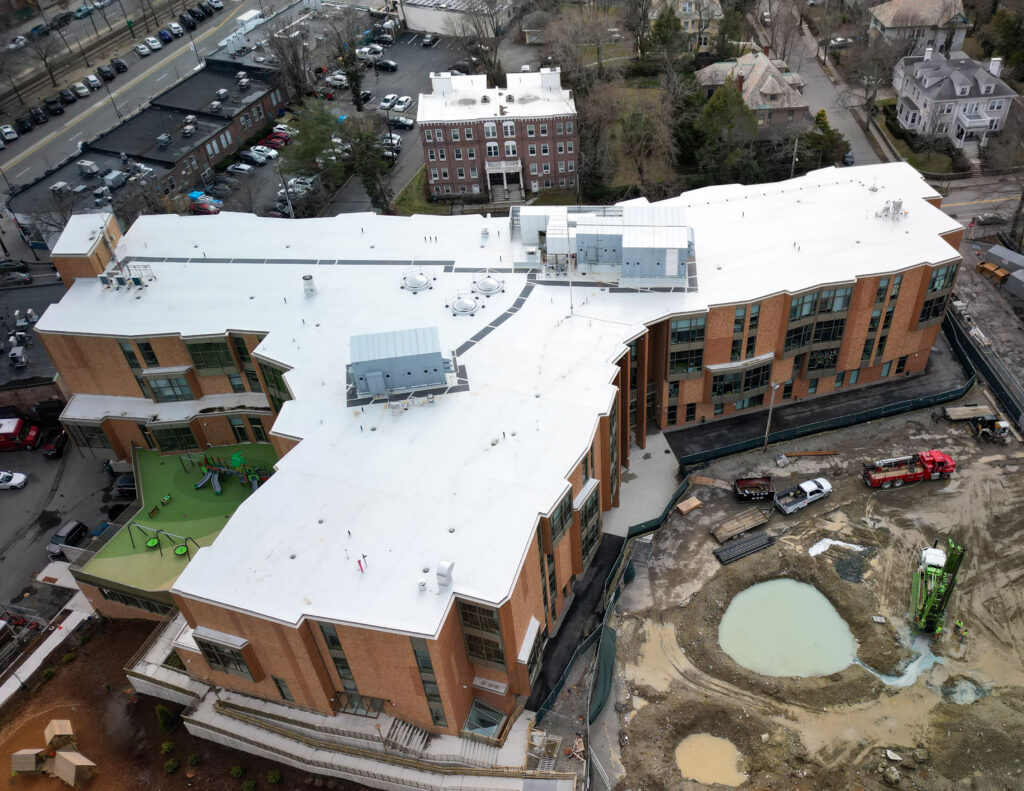TPO Roofing Technology: Benefits of Single-Ply Membranes
Reading Time: 5 minutesRoofing services have witnessed a remarkable evolution over the past few years. Thermoplastic Olefin, or TPO roofing technology, is a testament to the continuous pursuit of innovation. According to many professional contractors, TPO roofing is supposed to be one of the trending technologies available on the US market, offering a range of features that have reshaped the landscape of roofing services for commercial and residential properties.
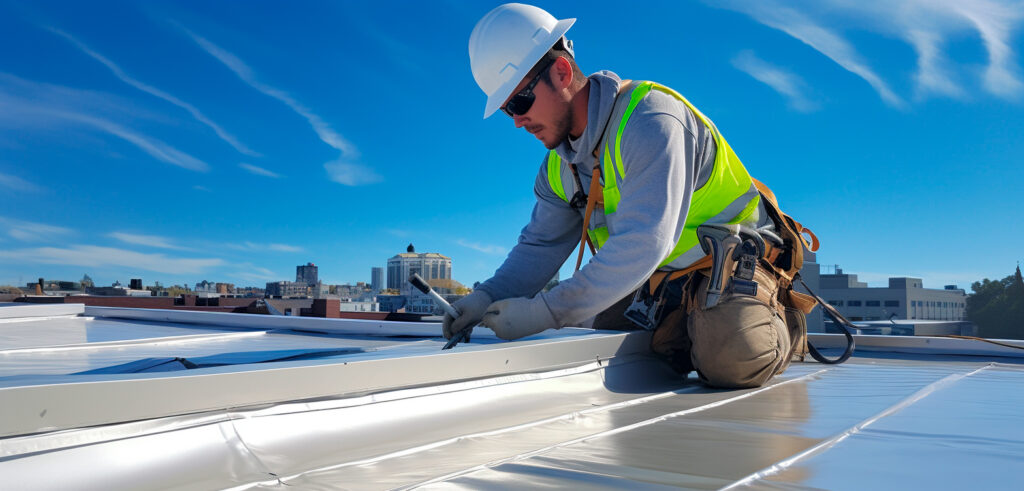
This guide will explore the technological nuances, pros, and cons that make TPO roofing a standout choice for flat and low-slope roofs. Moreover, we will discover how TPO influences the roofing industry and changes this field of construction services.
TPO Roofing: Common Information and Basic Facts
TPO is a membrane material whose qualities are similar to synthetic rubber roofs. What sets TPO apart is the technological ingenuity behind its composition. This membrane roofing covering results from precise polymer chemistry, where the combination of synthetic components creates a solid, robust, and versatile membrane. TPO roofing technology leverages the best attributes of each element to deliver a product that excels in durability, flexibility, and other benefits that we will discuss below.
Nowadays, modern single-ply roofing membranes are commonly used not only in new roof projects but also in renovating and reconstructing existing roofs.
Key Features of TPO Roofing Technology
1. Save money on air-conditioning
One of the hallmark features of TPO roofing technology is its ability to reflect the sun’s UV rays, which heat the roof surface. TPO membranes are designed to reflect not all but a significant portion of solar radiation, reducing the heat absorbed by the roof surface, especially in summer months. The less the flat roofs heat up, the less the entire building heats up, which means you can turn on the air conditioner at a lower power and waste less electricity. As sustainability becomes a focal point in construction, TPO’s reflective technology aligns with green and so-called ‘ecological’ building practices, making it an environmentally conscious choice.
2. Excellent Leak Protection
TPO roofing technology introduces heat-welding seams to ensure watertight integrity across the roof’s surface. The seams between sheets are fused using special hot-air equipment or chemicals (solvents, as a rule), creating a seamless and impermeable barrier against leaks and water infiltration. This innovative approach to seam construction enhances TPO roofing installations’ overall reliability and longevity regardless of the roof type.
3. Reinforced Covering is Durable Covering
TPO roofing technology introduced reinforced membranes in response to increased demand for strength and stability. These membranes incorporate a layer of reinforcement, often polyester or fiberglass, providing additional strength without compromising the inherent flexibility of TPO. Reinforced TPO technology caters to regions with high wind uplift requirements, ensuring the roofing system’s resilience in challenging weather conditions.
4. Easy and Fast Installation
TPO roofing is much easier to install compared to old-school technologies. The shorter the installation period, the less money you will spend on paying professional roofers. TPO membranes’ lightweight nature and flexibility allow quicker and more straightforward installations. It is also necessary for large commercial roof projects, which may exceed several hundred thousand square feet.
5. Choose Color and Tone
TPO roofing technology offers not only a comprehensive but also a decent array of color options, allowing property owners to choose colors and tones that complement their architectural preferences. The ability to customize roofing aesthetics enhances the visual appeal of structures, providing an additional layer of versatility and personalization. The price range may differ for dark and white membranes.
6. Sustainable Practices
As sustainability becomes a focal point in the construction (and roofing) industry, TPO roofing technology significantly contributes to minimizing harmful environmental emissions. The recyclability of TPO membranes aligns with the growing emphasis on reducing environmental impact due to energy efficiency. With this roofing material, you can reduce energy costs and use less air conditioning, which matches a green environmental trend.
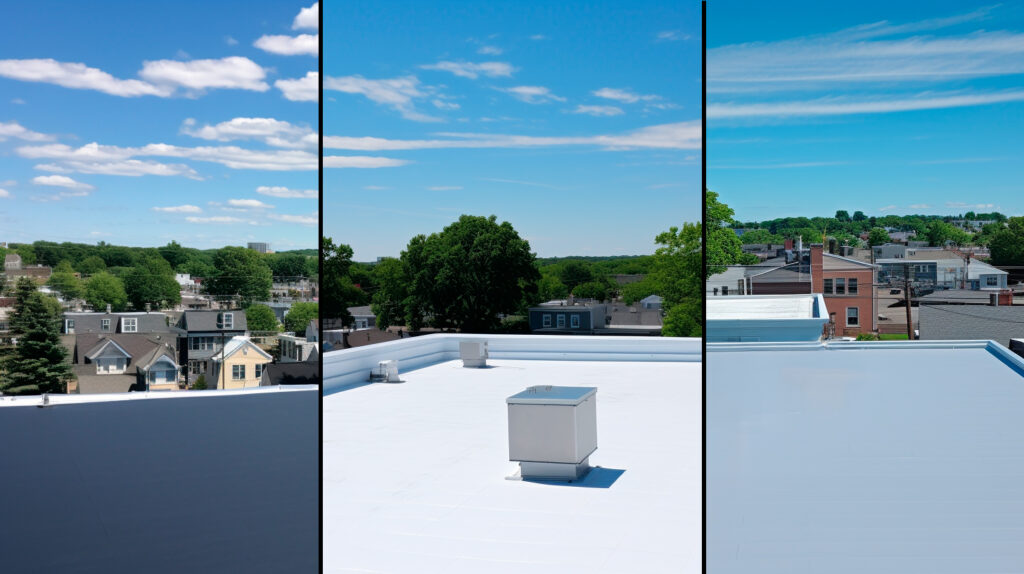
What’s About Prices?
- TPO roof cost depends on the thickness and type of membrane, the reinforcement, and the additional layers (optional). In addition, the cost depends on the brand.
- The TPO roof installation cost is affected by the contractor’s pricing policy and the roof area and type.
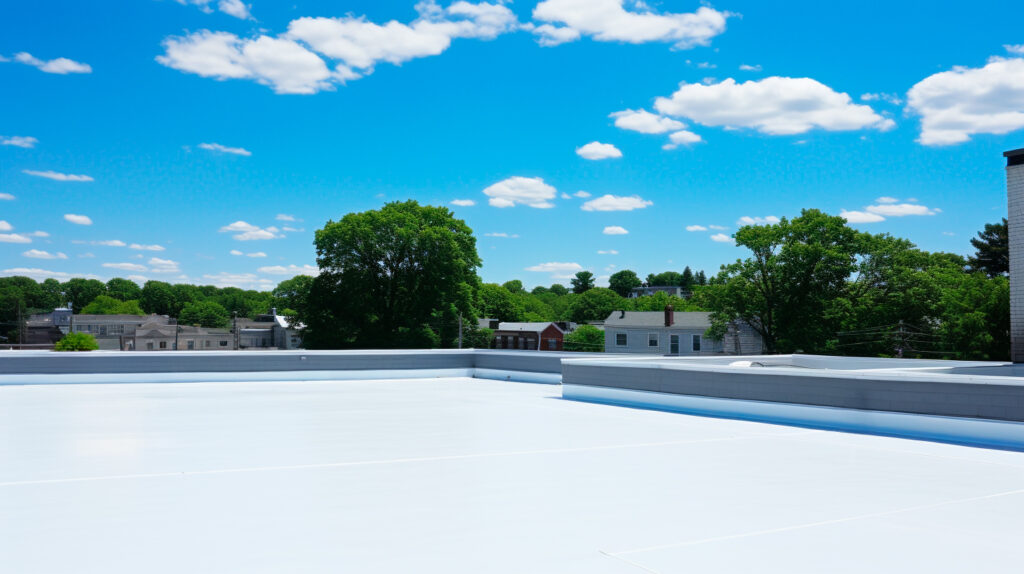
How to Install TPO Roofing
Method 1: Glue and Chemicals
The membrane is attached to the base with a unique mounting adhesive. This approach suits roofs with a relatively large slope or a high risk of intense wind loads.
Method 2: Ballast Roofing
This installation method is used on roofs with a concrete base. The membrane is installed only around the perimeter and near the joints. The roofing material on the base surface is held in place by ballast: gravel, pebbles, etc. It is essential to use high-quality waterproofing on such a roof because if repairs are required, you must dismantle the ballast, which is problematic in most cases.
Method 3: Mechanical Fastening
You can use fasteners if the ballast system cannot be installed for one reason or another. For fastening to a profiled sheet, use a plastic sleeve with a self-tapping screw; for a concrete base, use a dowel nail and a sleeve. This installation is quite affordable and fast. However, using specific fasteners to avoid damaging the membrane surface while installing TPO (thermoplastic polyolefin), PVC, or EMPD would be best.
Method 4: “Vacuum Fastening”
Creating a vacuum between the roof surface and the covering would be best. Usually, it is done by aerators with valves. As a result, the membrane can be mechanically attached along the parapets. This system is recommended for an old bitumen roof.
Note! During the installation of TPO material, pay special attention to the weakest points where leaks may occur – like seams that must be reliably heat welded or glued, like places adjacent to roofing communications, corners, structures such as chimneys, or air conditioners.
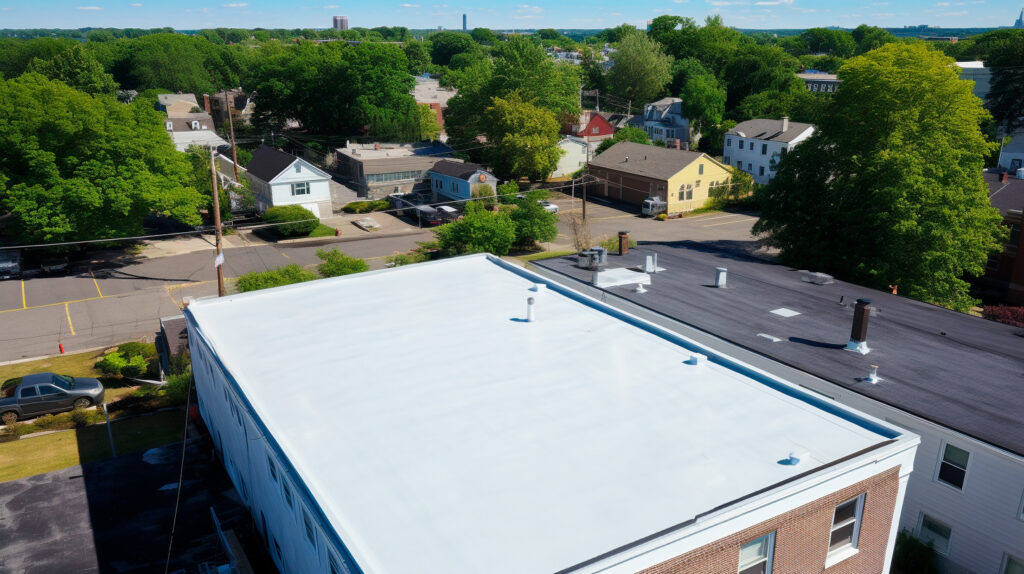
Conclusion: Call Professional Roofer
TPO roofing technology has revolutionized the industry, combining innovation, durability, and sustainability. TPO has become a go-to solution for those seeking cutting-edge roofing materials, from reflective technology for enhanced energy efficiency to heat-welding seams ensuring watertight integrity. In addition, TPO is one of the fastest-growing markets in the US. It proves the great demand for these products.
Latest Insights from Roofers: Cutting-Edge Trends and Expert Opinions
As technological advancements continue to propel TPO roofing into the future, its role in sustainable construction practices and energy-efficient building solutions will undoubtedly solidify, making it a cornerstone in the ever-evolving world of roofing technology. Do you want to take advantage of all the benefits of TPO roofing? In this case, we recommend contacting national roofing contractors who will help you choose the appropriate membrane material and carry out installation considering the design features of the building and the project.
Denis is the driving force behind ID Flat Roof, a leading company in Boston specializing in flat roof repair and installation for over 20 years.
Expertise:
Denis excels in PVC, TPO, EPDM, and rubber roofing. His meticulous approach ensures quality and customer satisfaction.
Innovation:
Denis incorporates cutting-edge solutions like skylights and solar PV roofing.






